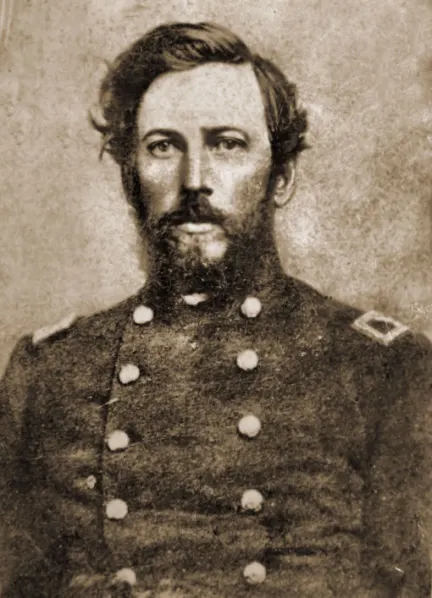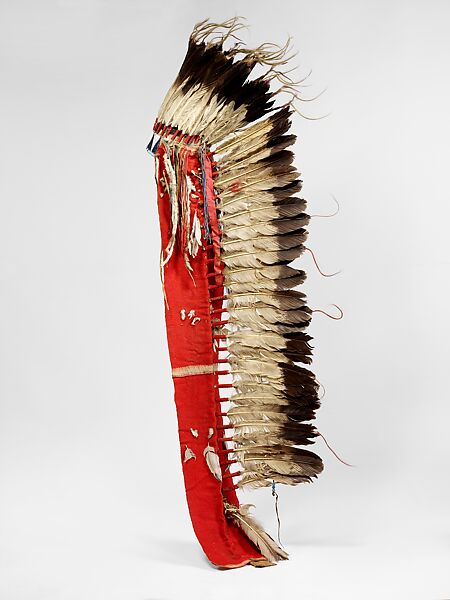Does anyone know why this logo is on most ambulances across the country, especially with Medic Rescue? Someone asked me this the other day. The history is quite interesting and spans across several ancient cultures; however, it does require a lengthy response. (All EMT’S and MEDICS should know the significance of this symbol.) Many years ago, ambulances used an “orange cross” with a white background to designate itself as an Emergency Vehicle. Subsequently, the American Red Cross began to complain about their “red cross” logo being confused with what was on the Emergency Vehicles that was in use at the time. As a result of the determined complaining, a solution was created. Leo Schwartz, Chief of the EMS branch, National Highway Traffic Safety Administration, created the Star of Life (six points) to designate itself separate from the Red Cross. This logo was adopted by the American Medical Association in 1967 and was trademarked for use on ambulances on February 1,1977. Eventually the logo was “given” to the National Registry of Emergency Medical Technicians (NREMT) for use as the EMT logo after the “trademark” expired in 1997. The “six points” of the star are as follows: 1. Detection; 2. Reporting; 3. Response; 4. On Scene Care; 5. Care in Transit; 6. Transfer to Definitive Care. (I would implore any Firefighters, EMT’S and Medics that follow my page to rectify my information should they see any errors thus far.) This is the story everyone knows, especially those employed in the service of EMS. However, it runs much deeper than you think: What does the snake and staff in the middle of the star represent?
The Rod of Asclepius:
I shall begin with the significance of the ancient Greek and Romans:
Asclepius (son of Apollo) was the deity of healing and medicine. His most famous temple was located in the ancient city of Epidaurus. Here, the sick was brought into the temple to sleep among non-venomous snakes so that they could be “healed” of their ailments or injuries; that is, the snakes were permitted to crawl on them while they slept. This is also the location where “Hippocrates”, the “father of medicine”, began his career. The “original” oath of Hippocrates started like this: “I swear by Apollo the Physician and by Asclepius and by Hygeia (Greek goddess of health) and Panacea (Greek goddess of healing and daughter of Asclepius) and by all the Gods…”. (Originally, the snake and staff were separate symbols of healing that became ingrained as this worship practice progressed.) “What you are seeking here, O Romans, you should seek for nearer you. Then seek it nearer, for you do not need Apollo to relieve your wasting plague, you need Apollo’s son. Go then to him with a good omen and invite his aid.”
-Ovid (ancient Roman poet), Metamorphoses, Book 15. The rod of Asclepius is everywhere you look in the field of medicine today: the image of a single serpent entwined around a staff. For example, note its depictions on the logos of the World Health Organization, Yale University School of Medicine, and the British Medical Association, and on most ambulances you see today, to name a few.
Asclepius, the owner of the rod of this enduring symbol is based upon, was the Greek and Roman god of medicine, the son of the god Apollo and of mortal Coronis. Apollo, upon hearing from a raven that his pregnant love Coronis was betraying him with Ischys, killed Coronis in rage. Before she drew her final breath, she revealed to Apollo that it was his child she was pregnant with. Apollo immediately repented, and desperately tried to save her. Coronis died, Apollo, even with his skills as a healer, was unsuccessful. Apollo did, however, manage to rescue her unborn child from her body, who he brought to the centaur Chiron. Asclepius was taught the art of healing by Chiron. As a testament to his great power as a healer, ancient Greek historian, Diodorus Siculus, notes that Asclepius had prevented so many souls from entering Hades, that the lord of the dead complained, causing Zeus to strike Asclepius down.
The image of the rod of Asclepius is not to be confused with, though it often is, the caduceus of Hermes: a depiction of a staff entwined with two serpents, usually with wings.
The story grows with even more significance from various cultures throughout the ancient world.
Among the ancient Akkadians and Sumerians, the snake was believed to be immortal because of the shedding of its skin; this new growth symbolically demonstrated new life, new “healing.” There is also the famous legend of the Buddha and the Cobra: One day Gautama (Buddha) was walking alone in a field when, quite suddenly, a violent thunderstorm ensued him. Almost instantly, a giant cobra approached Buddha from behind, extended his hood, and sheltered the Buddha from the storm. Being extremely gracious of his action, the Buddha proclaimed the cobra as a protector and healer.
In certain Native American cultures, the rattlesnake is the creator of the world and controls the four winds of the earth and prosperity of humanity. Among the Hopi tribes, the snake is the healer and abolisher of evil. In Haitian and Louisiana voodoo, the “Damballa” (snake god) is the creator of the cosmic universe; he created the planets and the stars by using 7,000 of his own coils. By shedding his skin, he created all the water that is on the earth.
In the Mesoamerican and Pre-Columbian cultures, there are the various stories of the “Feathered Serpent”. (In the Mayan culture, this deity is called Kukulkan; in the Aztec culture, this name is more commonly known as Quetzalcoatl.) It is originally believed that these two giant cultures inherited this deity from the Olmec people, who flourished in Mexico about a thousand years before the emergence of the Mayans; subsequently, the Aztecs inherited this deity from the Mayans. One of the most popular stories of this Feathered Serpent is that it is a snake that is covered with feathers which the feathers enable him to fly, and the scales on his bottom which enable him to crawl. Subsequently, the shedding of his skin was symbolic of rebirth and renewal. There is also another story of this serpent flying towards the sun because the deity wished to speak to it; as a result, the sun burned his tongue; hence, the lisping of the serpent’s tongue. Primarily among the Mayans, the Feathered Serpent is thought to be the most important deity. It is often depicted as having two heads in which a God or ancestor emerged from its jaws; during Mayan bloodletting rituals, participants would claim to have experienced visions which would enable them to communicate with the Gods or ancestors; consequently, the Feathered Serpent served the purpose of a mystical gateway between the physical world and the afterlife, or realm of the spirits.
In Hinduism,” Shesha” (the thousand-headed snake) supports the world on his many heads to prevent us from sinking into the universe; the god Vishnu (preserver of life) uses his back as a place of rest and “watches” the human race. Shesha also sheltered Krishna (personification and protector of the cosmos; his chest is the physical representation of ALL the “stars” in the universe) from a thunderstorm during his birth.” Where there are stars, there is life.” Hindu proverb (This is quite an extraordinary comment considering how many stars are in the universe!)
In ancient Egypt, the symbol of the cobra was unprecedented! The cobra was associated with the god “Ra” (the creator of the world; he also created man from his own “tears of joy”.) Later, the cobra would be associated with the goddess “Wadjet” (snake goddess; she is depicted as a cobra who is capable of breathing fire at pharaoh’s enemies and becomes a symbol of his sovereignty). Still Later she is connected to the creation of the papyrus swamps and the nursing of Horus (sun god), son of Osiris and Isis. (I should pause here and remind you that the “Sun” God is quite relevant to the “star of life.” How? Keep in mind that the sun is a star; they didn’t know that in antiquity.) In addition to the cobra, the next symbolic representation of power and divinity was the “Was” (or scepter, staff) that Pharaohs, Gods and Priests carried. These staffs were said to contain mystical healing and ruling properties that were to be administered by those in possession of them. Finally, in the funerary context, these scepters or rods were buried with the dead to protect them in the afterlife; they also were made as amulets that supposedly contained magical healing properties to protect loved ones from injury and sickness. (The latter is mentioned in the “living” context.)
In Oceania, there is an intriguing myth among the Māori about the Sun and the Snake: After the world had been created and all was in its proper place, the Sun called all the living things to a meeting. Every “living” thing was in attendance except man. (Even all the creatures in the ocean stuck their heads out of the sea to listen to what the Sun had to say.) The Sun asked a simple question:” Who wants to live forever?” As a result, the animals and plants were granted immortality; because of man’s disobedience, he was punished with death. Had man obeyed the request of the Sun, he could have shed his skin, like the Snake, and live forever. Consequently, the Snake taught man how to cure diseases and prolong his life on earth.
In the Islamic tradition, under the “Kaaba” (the holiest site in all of Islam in Mecca), a white serpent (placed there by Allah) with a black head and tail resides in a pit, protecting the “secret treasures” that are buried there. On the day of Resurrection, he will speak to all of mankind and implore the world to repent or face judgment.
Last, but certainly not in the least, our own Bible has much to say on this matter. In the Hebrew Bible (The Old Testament is an inappropriate term!), the Book of Genesis represents the serpent as the fall of man (Genesis 3:1-20). Ironically, the Hebrew word “nahash” (נחש) can also mean “sea monsters”. Examples of this term are found in the Book of Isaiah where a reference is made to a serpent like Leviathan (Isaiah 27:1); the Book of Amos mentions a sea monster that resides somewhere in the deep (Amos 9:3). On a more figurative paradigm, the serpent describes biblical places such as Egypt (Jeremiah 46:22), and the ancient city of Dan (Genesis 49:17).
However, the zenith of the meaning takes place in the Book of Exodus.” So, Moses and Aaron went to Pharaoh and did just as the LORD commanded. Aaron threw his “staff “down in front of Pharaoh and his officials, and it became a snake.” (Exodus 7:10) “The Lord said to Moses, “Why do you cry to me? Tell the people of Israel to go forward. Lift up your “staff” and stretch out your hand over the sea and divide it, that the people of Israel may go through the sea on dry ground. (Exodus 13:15-16)
During the exodus from Egypt, the Book of Numbers also narrates a remarkable story of the serpent. During the set out from Mount Hor, the Israelites were compelled to detour around Mount Edom (Numbers 20:21,25); frustrated with God and Moses, they verbally cursed both. In retaliation of their unfaithfulness, God sent fiery serpents to consume them; however, for the sake of those who actually recanted their tongues, God instructed Moses to build a “bronze serpent” that was used to “heal” those who looked upon it (Numbers 21:4-9).
The New Testament handles this genre a bit differently. In the Gospel of Matthew, John the Baptist calls the Pharisees and Sadducees, who were visiting him, “brood of vipers” (Matthew 3:7). Jesus also astutely uses the imagery when he addresses a crowd who hears him speak,” Ye serpents, ye generation of vipers, how long can ye escape the damnation of Gehenna?” (Matthew 23:33) Surprisingly, he changes the connotation of this meaning when he instructs his twelve apostles to go out and preach,” Behold, I send you forth as sheep in the midst of wolves: be ye therefore wise as “serpents”, and harmless as doves” (Matthew 10:16). But in the Gospel of John, he illustrates the serpent with the Mosaic inscription that would climax with his own crucifixion,” Just as Moses lifted up the “snake” in the wilderness, so the Son of Man must be lifted up, that everyone who believes may have eternal life in him” (John 3:14-15).
Lastly, we go to the “Temptation of Christ”. (We all know this story of the Devil tempting Jesus.) The Devil cites Psalm 91:11-12,” For it is written, He shall give his angels charge concerning thee: and in {their} hands they shall bear thee up, lest any time thou dash thy foot against a stone.” However, he omits (cleverly) verse 13,” Thou shalt tread upon the lion and adder(snake): the young lion and the dragon shalt thou trample under feet.” The adder in verse 13 is identified (by Christians) as Satan. In the Vulgate (the Latin Bible), this is beautifully said,” super aspidem et basiliscum calcabis conculcabis leonum et draconem”; that is,” The asp and the basilisk you will trample underfoot; you will tread on the lion and the dragon.” (However, this appears as Psalm 90 in the “Douay Rheims”, the English translation of the Latin Vulgate.) In the infamous movie ”The Passion of the Christ”, there is a magnificent scene where Satan appears to Christ in the Garden of Gethsemane while he is praying; to distract him, a serpent appears out from the devil and Jesus, at the last moment of his prayer, begins to sweat blood; he instantly catches sight of the snake and steps on it and the devil vanishes from his sight. This, of course, is symbolically demonstrating the power of Christ over evil. (If you have watched the movie, the scene is quite extraordinary!)
Presently, in rural parts of Appalachia,” snake-handling” is still a common practice in the worship of certain churches. They justify their means with the Gospel of Mark,” They will pick up snakes in their hands, and if they drink any deadly thing, it will not hurt them; they will lay their hands on the sick, and they will recover” (Mark 16:18). (I just wonder if these folks know that the EARLIEST GREEK New Testament manuscripts we have for Mark (for this chapter) omit verses 9-20; that is, these verses are based on a “textual variant”. In other words, these verses were written into this chapter much later by a scribe who was copying an earlier version which did not include these verses. That’s another story.)
So, how does this all fit? If I were to invent a mythical equation of the two symbols, it might go something like this: 1. The “star of life “is you. You are the life that needs healing or treatment or transport to a medical facility. Or, perhaps, the ambulance itself. It is sheltering life from further damage and harmful exposure until more advanced medical attention can be obtained. 2.The “serpent” is the Medic or EMT who is treating you. Somewhat like Asclepius, they, symbolically, have the power of “healing”; they are trained to treat and transport those who are in need. Their dedication and skills have saved countless lives (sadly, they’re recipients of a thankless audience)! 3.The “rod “or “staff’ is the tool they treat you with. Whatever is required: Oxygen, IV’s, AED Defibrillators, etc. (I think, by now, you get the idea.)
To end this article, I have given you a global paradigm of how significant the “snake” and “rod” has been strewn across the most influential cultures the world (or God) has carved into existence. It is quite an expansive undertaking; however, I feel I have articulated how important and symbolic virtue and history have shaped our perception of medicine and pre-hospital care has become, and how expansive its resource is on humanity. It is the ancient cultures, their aggrandizement of medicine, healing, and deities that have molded our own contentment and security that continue to “heal” our misconceptions and trivial propensity toward the enlightenment of advanced medical procedure.

© 2024, Mark Grago. All rights reserved.











